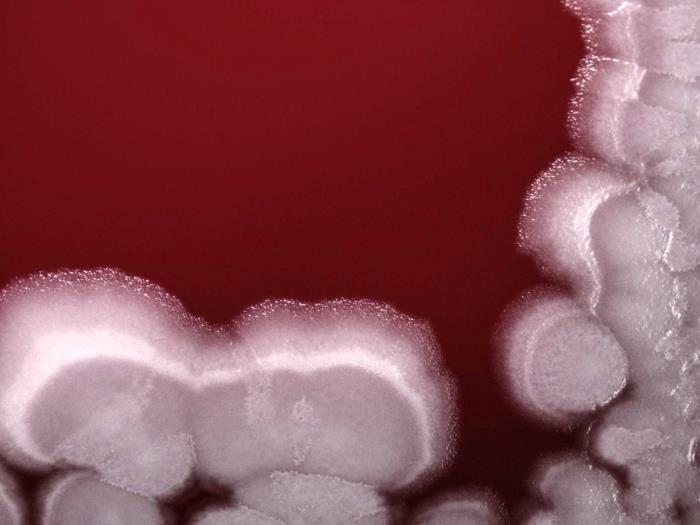Every bank in this world has its own system of protection and it is upgraded on daily basis. They are trying to follow security protocols so their treasury will be safe. Now try to imagine banks what are a bit different than the typical one, in which the treasure, if it is stolen, can change our whole life, turning it into local, national or international nightmare. Welcome to the germ banks, a place where instead of money you can find germs, small microbes what are able to infect the world we know in more aggressive way than economical fluctuations.

After the events of 9/11 and rising of terrorism as a new ideology for extremists worldwide, it was obvious that security should be considered very seriously so future mistakes could be eliminated on time, especially in those fields of terrorist potential interests. Among them, germ banks are taking the top priority because terrorist groups find biological material very useful for their destructive plans against system they are fighting.
The Defense Threat Reduction Agency in America, not so long after terrorist attacks, focused on researching the availability of biological substances across the US and they concluded that many private labs are also small isolated germ banks, supply centers, which do work without any monitoring. They are producing and selling microorganisms to researchers, but also to anyone who has enough money to pay for it. There is no control of ordering the biological material, there is not any control of the people who use that biological material and no one check them about their final purposes.
In other words, this means that America is giving open opportunity to those who would try to harm its people. The results from that kind of research forced the American officials to warn germ banks all around the state to start working on empowering the security measures. Some American germ banks even destroyed their own stock of microbes, trying to prevent the biological incidents.
This was the case with the Iowa State University, which had had a great collection of anthrax bacilli, since 1928. Governor Tom Vilsack ordered law‐enforcement officers to stand guard over the Iowa State Laboratory, it was clear that anthrax bacilli will cause more problems and costs than potential outcomes for science. The decision was made; anthrax was killed. The threat from that side was reduced for now, but there are also another 250 scientific supply houses across the US, which still have anthrax, and around the world, it is located in more than 1.000 facilities for scientific research programs.
Years ago; producing, stocking and exchanging of the culture of microorganisms helped the scientists around the globe to develop their ideas and to test their solutions and, at the end of the day, it helped in finding many cures for deadly diseases. That was one of the main reasons for founding The World Federation for Culture Collections, an organization that maintains a nearly 476‐ culture collection from 62 countries, with the purpose to enable free communication and internal exchange between microbiologists from every part of the world, united in the mission against deadly microbes.
Since the American germ banks have started dealing with safeguard recommendations from above and have implemented the suggested safety steps, they also have pressed their international colleagues to follow the same rules and to increase the level of biosafety in their centers. Dr. Raymond H. Cypess, president of the world’s largest germ bank, the American Type Culture Collection, a nonprofit biological resource center from 1925, located in Manassas, VA in one of his interviews said that International Community of Microbiologists failed to reply on safeguards requests because they have not dealt with biological terrorism threats as America had.
They ignored the threat because they did not believe it could also happen to them. If we look how it is designed the ATCC’s website and order catalog, it is obvious that they made a big step forward in enhancing the security background. Their work supported by a partnership with LGC standards, which means they are controlling and observing all they are able. The order is not possible to be made before The Material Transfer Agreement is signed, a contract between Supply Subject and Purchaser. In this way, germ bank makes its own base of purchasers and their orders. Many other germ banks try to copy this model of control but it requires lot of logistical support.
In 2010, the World Federation for Culture Collections finally made “WORLD FEDERATION FOR CULTURE COLLECTIONS GUIDELINES FOR THE ESTABLISHMENT AND OPERATION OF COLLECTIONS OF CULTURES OF MICROORGANISMS”; a document that addressed the burning issue of biological safety. In the chapter about Control of Distribution of Dangerous Organisms, they insist on The Material Transfer Agreement and procedures for checking the validity of customers and sometimes even the permissions by state officials for their orders.
Germ banks are very important for science but their security is the most important for the entire world. Some of them achieved progress in accepting recommended safeguards but many of them are still developing their capability for that. In the meantime, that crack could be used for material transfer, which has not been agreed.
Sandra Maksimovic-Sara, has an MA in Biological Counter Terrorism Studies, with special interests of researching and writing about Biological Weapons, Biosecurity and Biodefense. Sandra hails from Serbia.


2 thoughts on “Germ Bank Security: Safeguards for a new age of challenges”